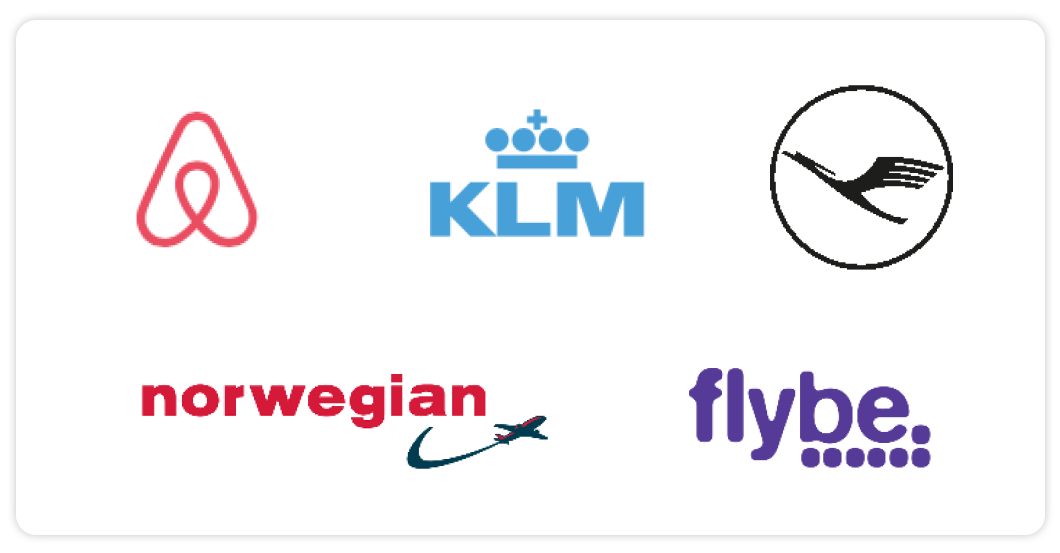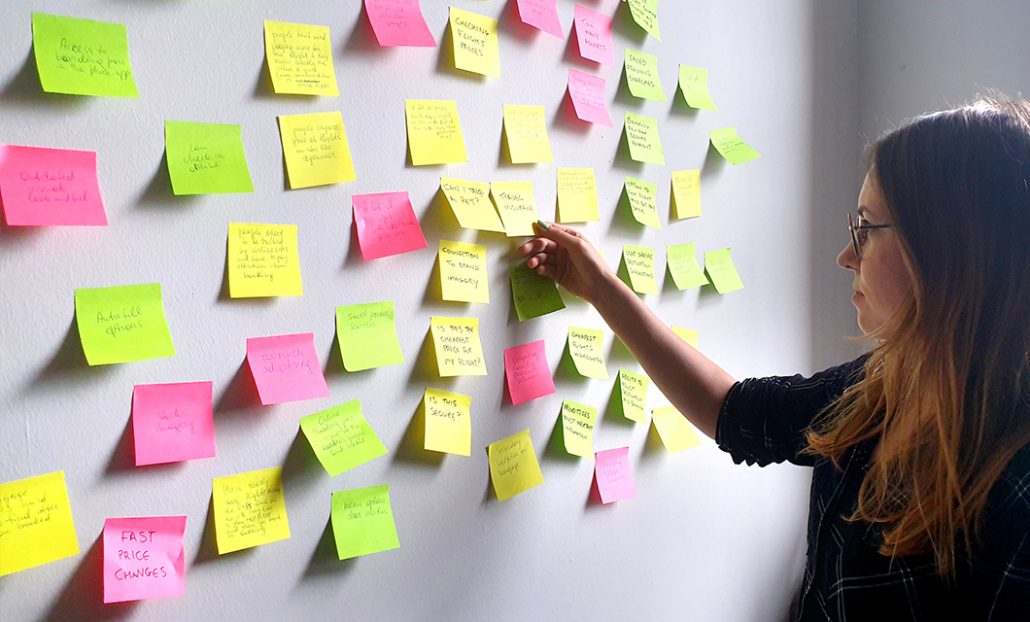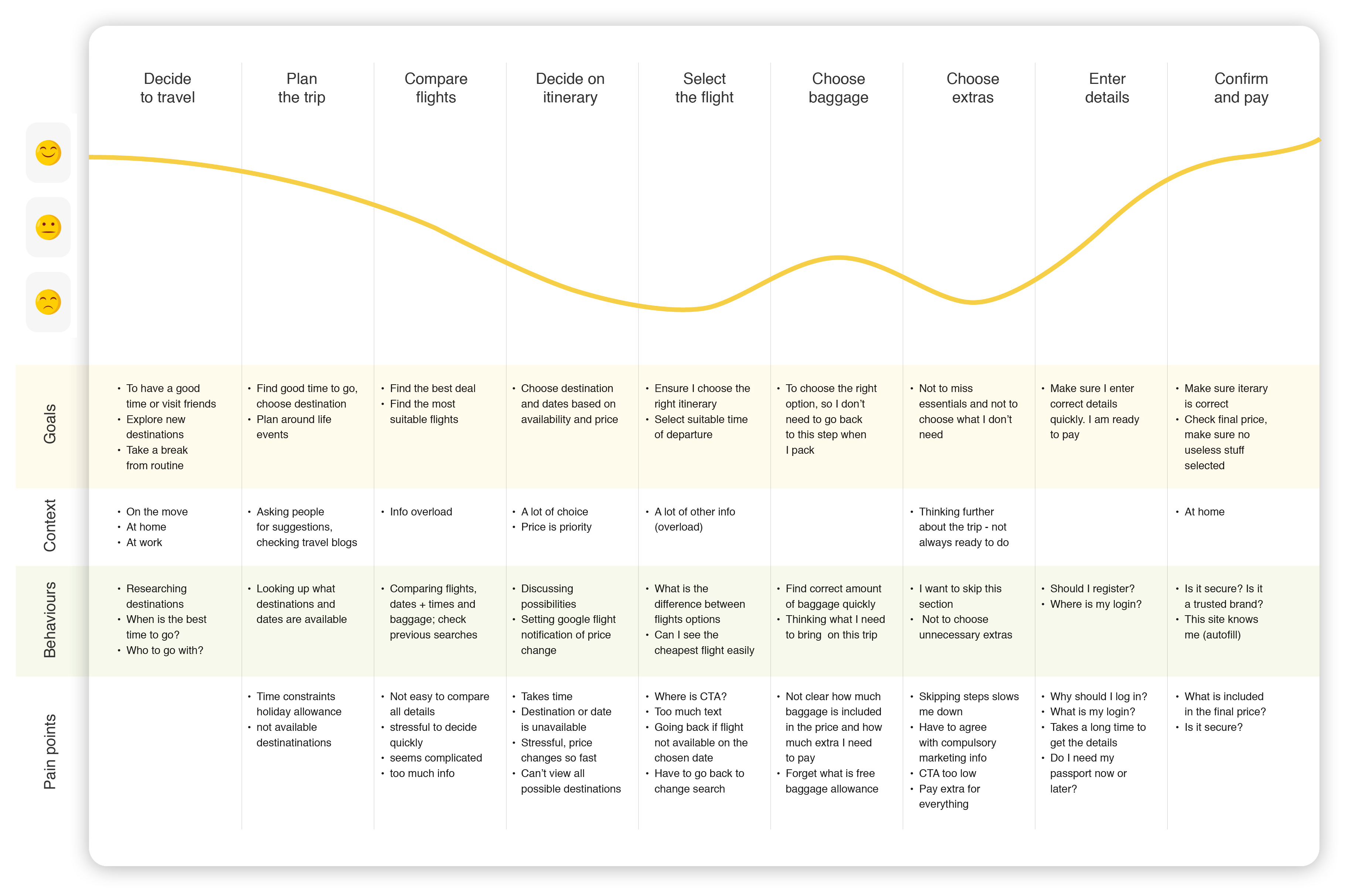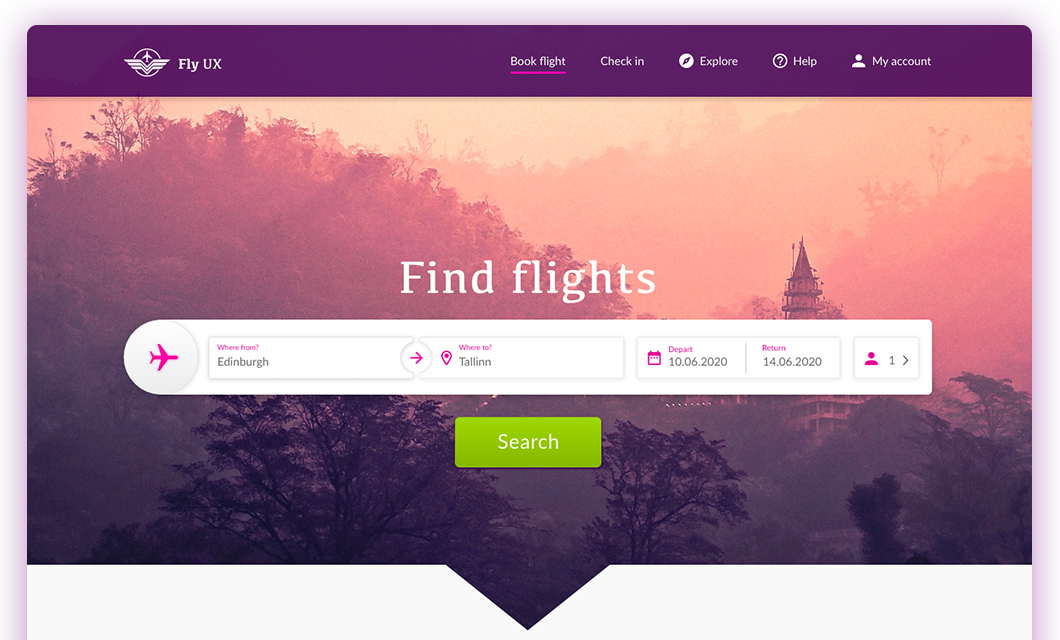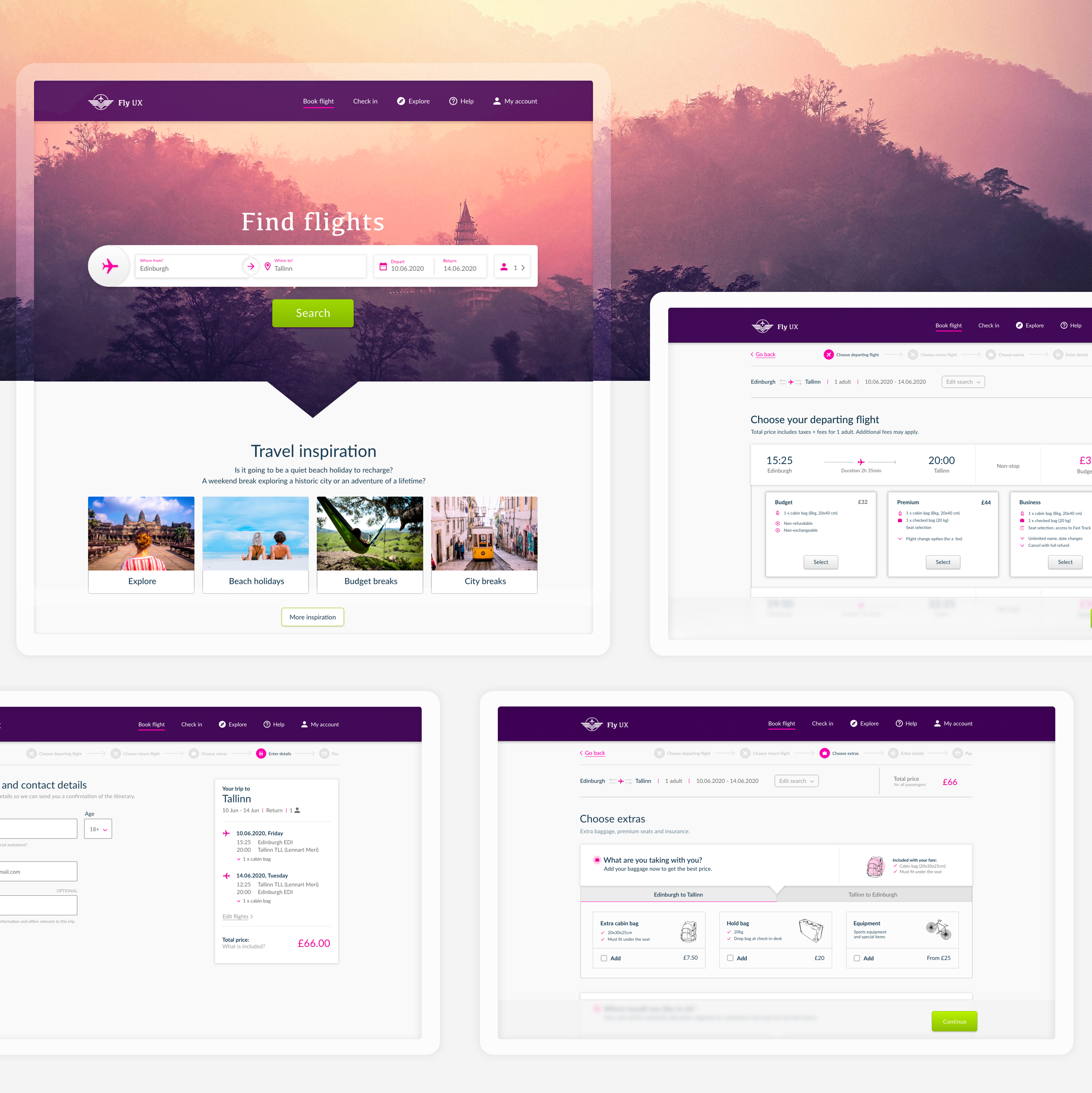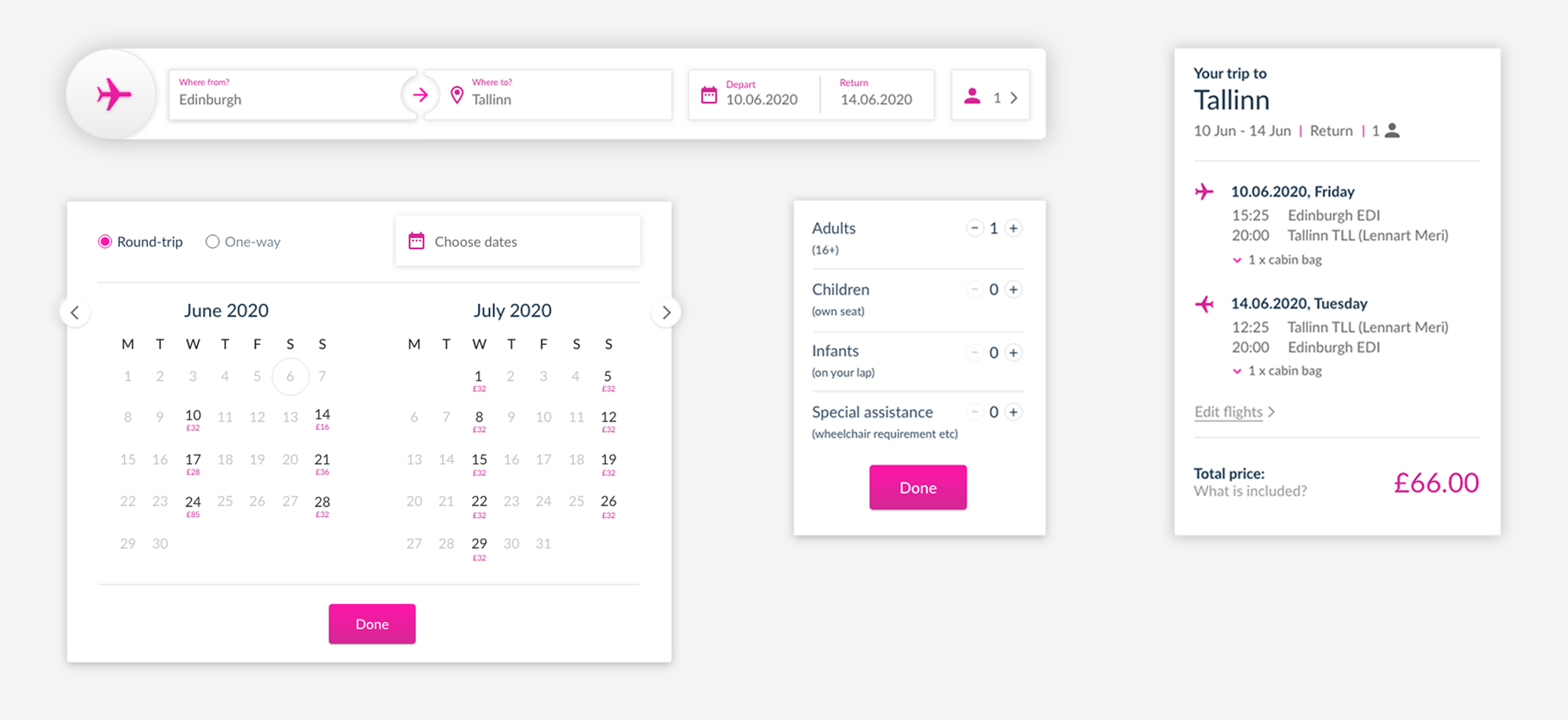Flight booking process UX case study
This is a case study I created that demonstrates my UX process for an airline website. Done as a part of the UX Design course with the UX Design Institute.
Fly UX is an airline company that provides a quick and easy flight booking service with competitive prices for a range of budgets. Its simple mission is to make booking flights as exciting as exploring new destinations.
The project: Flight booking process for the UX Design Institute professional diploma course.
Tools: Adobe XD
01 Research
Identifying the problem
Why is booking a flight is so frustrating?
Nothing beats planning a holiday on a cold winter day, planning your next trip to the sun gives you something to look forward to but the experience of booking a flight can be extremely negative. It can leave you feeling very frustrating, rushed, overwhelmed with information and bombarded with pop ups. You might even start questioning your decision to go on holiday as a result.
I used varied research methods to better understand the problem and pinpoint what frustrates users the most about the flight booking process. My main goal was to maintain and even increase the excitement generated by an upcoming trip throughout the booking process
Objectives
- Identify high-level flow issues on airline websites and find out about the industry conventions
- Conduct usability tests to identify user challenges and learn more about user goals
Methods:
In-depth interviews / Usability tests / Competitor benchmarking / Heuristic evaluation / Online survey
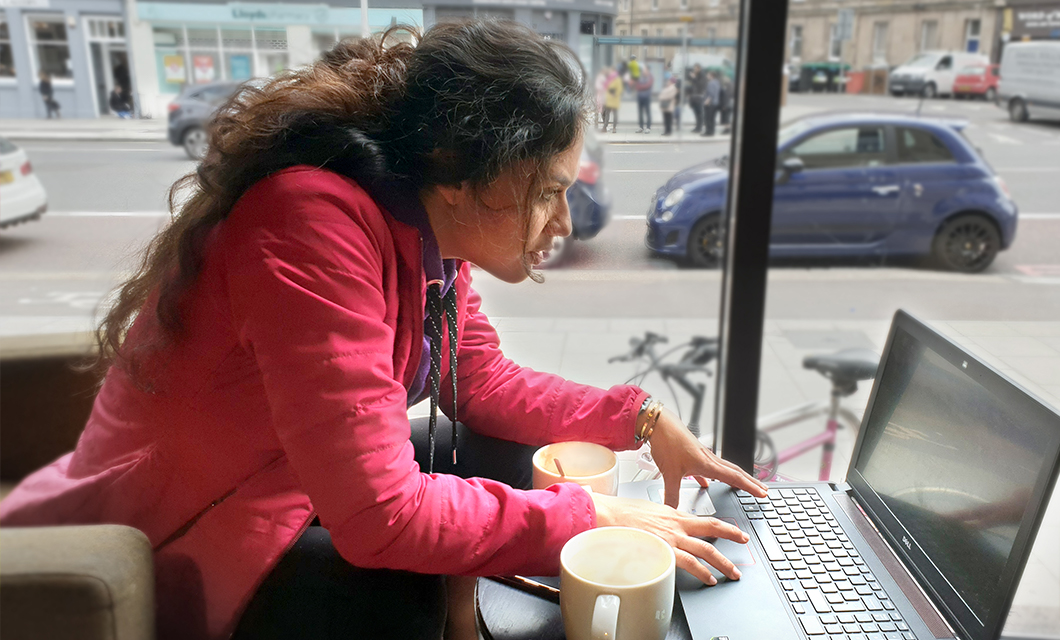
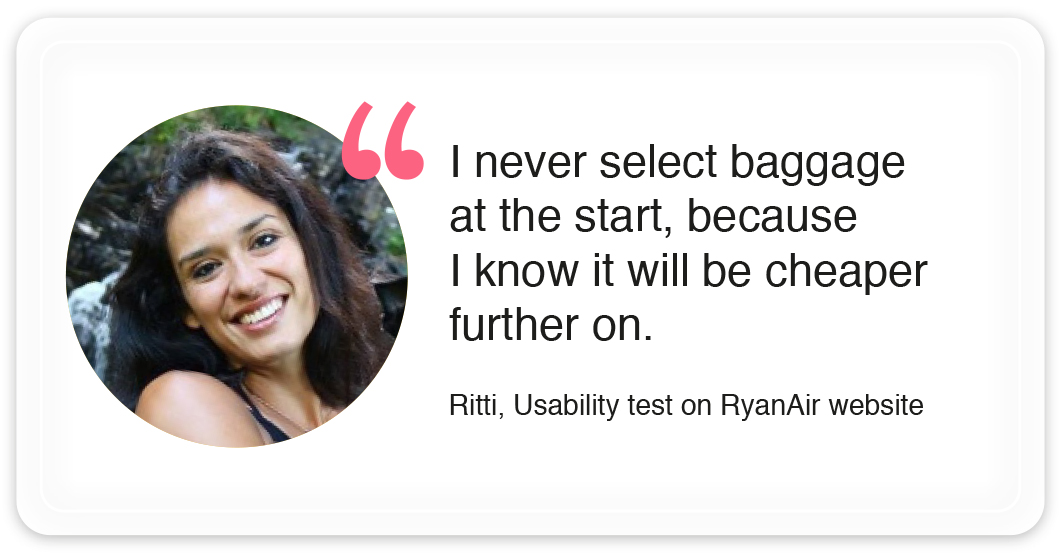
Usability tests and in-depth interviews
I conducted usability sessions and in-depth interviews with 5 users to learn more about their goals, behaviours and pain points.
The best way to find out usability information about your product and the quality of user experience is to observe people using it

Online survey
I asked 20 people about their booking habits and behaviours. I gathered both qualitative and quantitative data which helped me prove some of the assumptions to be true.
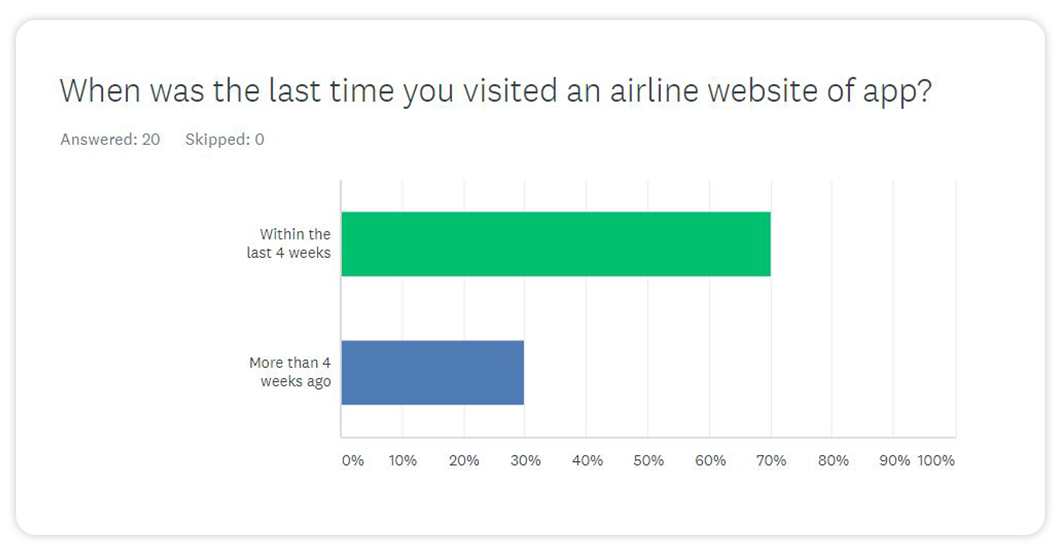
Competitor benchmarking
I compared booking processes on 5 websites and used heuristics principles to evaluate areas that could be improved and industry conventions.
